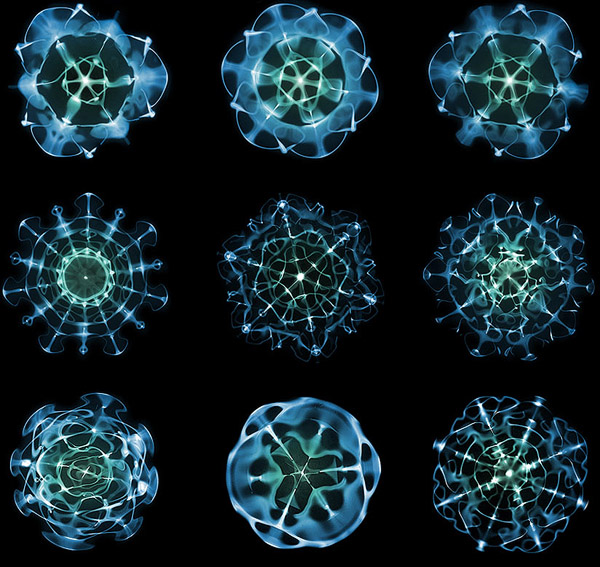I call architecture frozen music
1.Music and Geometry
Music and Geometry are more closely linked than apparent . The interconnected aspects of the two sciences, since the beginning of theoretical speculation, have been fundamental for architectural composition. The theory of “Number” by Pythagoras revealed fixed relations between simple numbers and musical consonances. These proportions were later used to “elevate” architecture. The theory of “Number” was part of a larger theoretical complex, according to which divine perfection manifests itself in all things through the rules of harmony. Pythagoras and Plato laid the foundations of this theory: the phenomenical world is linked to the metaphysical one through the reflection of the “Musica universalis” upon “the things of the Earth”.

Pythagoras related the length of a rope to the pitch of a sound and consequently used the monochord to explain numerical ratios according to the melodic range that they form. Plato illustrated the “Musica universalis” in “The Timaeus” and through the Myth of Er in “The Republic”, confirming the Pythagorean thought that the soul of man coincides with the soul of the world, both similar in structure and harmony. The considerations on the value of Pythagoras’ “Number” and Plato’s geometric solids

form the starting point for most of the later theories on the subject, in particular the Renaissance Neoplatonism: Vitruvius’ architecture, Dantes’ poetry and Boethius’ music. Later, Alberti found in harmonious proportions the link between architecture and music,

as did Palladio (using the new harmonic ratios of the musical consonances introduced by Zarlino), reaching up to N.F. Blondel (late seventeenth century). The harmonic consonances affect the human mind, and through perception of the same harmonies man unites with God according to the “Doctrine of the affections”. The leading proponent of this theory is Vincenzo Galilei, the father of GaIileo, music theorist of great importance that goes back to the ancient philosophy of Aristotle and Aristoxenus.
2.Sound and Space
In ancient times hearing was a fundamental mean of perception and music was highly significant in the design process, its influence peaking in the Renaissance. The excellent acoustics of Greek amphitheaters are still to be fully understood. Vitruvius speaks of these acoustics referring to resonator vessels in Book V of De architectura. The theoretical studies of the physics of sound begin in the sixteenth century with G.B. Benedetti, and are firmly established in 1600 by Mersenne, founder of “modern acoustics”, and Saveur. Blind people are able to perceive the essence of a space using touch, smell and hearing as primary means to acquire information. Hearing, the strongest of those three senses, generates an fundamental spatial understanding according to the way Sound develops through Space. The reverberation of the sound enveloping through it, is functional to the solemnity perceived in a church. Sound creates, enhances and alters the perception of space depending on design and materials employed, enriching the experience of a site. The ability to perceive space through sound is ultra-objective and innate in humans.
3.Frequency and Membrane
Quantum physics demonstrates how all matter is in continuous movement, vibrating, generating a specific frequency, interacting with other frequencies. All substance is consisting of atoms, each atom being a nucleus with electrons rotating around it. The number and shape of these electrons and their orbits give each substance a particular set of vibrational frequencies. Whatever the substance, nothing is solid, composed by a set of nuclei surrounded by an endlessly rotating wave. Everything is eternally moving and vibrating at an incommensurable speed. The human eye can see matter, but not the vibrations of the atoms composing it. Galileo Galilei was the first to notice the formation of regular patterns on an oscillating body while experimenting with plates & chisels in 1632. Cymatics began to reach a wider audience when Ernst Chladni later repeated those experiments, publishing his findings in the book Discoveries in the Theory of sound [1787]. Variations on the Chladni plate [Chladni modes] are still in use today by many instrument manufacturers.

Most typically used in the design and building of guitars, violins and cellos, Chladni modes help to visually reveal how the Membrane (wood, metal, skin for drums) of an instrument is resonating at a given Frequency. The physicist Hans Jenny popularized wave phenomena and the creation of ethereal looking water-sound images.

He revealed how vibration generates dynamic and ordered patterns, describing a sound-matrix at work in nature, an invisible driving force that could create everything from the wave-like shape of a mountain range, to the stripes on a zebra, or the petals on a flower. “The more one studies these things, the more one realizes that sound is the creative principle. It must be regarded as primordial. No single phenomenal category can be claimed as the aboriginal principle. We cannot say, in the beginning was numbers or in the beginning was symmetry, etc..... They are not themselves the creative power. This power is inherent in tone, in sound.”
4.Questions
Vibrational frequency has an immediate effect on water. Since all life on Earth is composed mostly of water and since the human body is composed of up to 70% water, any type of vibratory frequency emitted in our surroundings has a direct impact on our physical state and vice versa. Can the vibrational frequencies of our body affect our environment?
